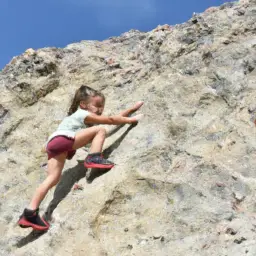As a teacher, you have a vital role in building resilience and developing grit in your students. Resilience is the ability to bounce back from adversity, while grit is the perseverance and passion to achieve long-term goals despite obstacles. Both of these traits are essential for success in school and in life.
Fortunately, resilience and grit can be taught and cultivated in the classroom. By fostering a growth mindset, encouraging perseverance, promoting a positive classroom culture, incorporating resilience and grit into the curriculum, and measuring growth and progress, you can help your students develop the skills they need to overcome challenges and achieve their goals.
In this article, we will explore the different ways that you can build resilience and develop grit in your classroom, and the important role that you play in helping your students succeed.
Key Takeaways
- Resilience and grit can be taught and cultivated in the classroom through fostering a growth mindset, encouraging perseverance, promoting a positive classroom culture, and incorporating resilience and grit into the curriculum.
- Developing self-awareness and a growth mindset is essential for building resilience and grit in students.
- Teachers should praise effort, encourage collaboration and feedback, and model a growth mindset to inspire students to adopt the same attitude towards learning and growth.
- Measuring growth and progress through tools such as the Resilience Scale and Grit Scale, as well as feedback from colleagues, parents, and students, is important for assessing and celebrating students’ resilience and grit levels.
Understanding Resilience and Grit
If you want your students to be successful, it’s essential to understand the true meaning of resilience and grit.
Resilience is the ability to bounce back from adversity, while grit is the passion and perseverance to achieve long-term goals.
It’s important to understand that resilience is not the same as perfectionism. Perfectionism can lead to fear of failure, which can hinder a student’s ability to develop resilience.
Therefore, it’s crucial for teachers to encourage their students to embrace failure as a natural part of the learning process.
Developing grit through failure is another critical aspect of building resilience in the classroom. When students fail, they have an opportunity to learn from their mistakes and develop grit.
Teachers can help their students develop grit by setting challenging goals and providing constructive feedback. Additionally, teachers can promote a growth mindset by reinforcing the idea that intelligence and skills can be developed through hard work and dedication.
By fostering a growth mindset and encouraging students to embrace failure, teachers can help their students develop the resilience and grit needed for long-term success.
Fostering a Growth Mindset
Let’s explore how we can encourage a growth mindset in students! Developing self-awareness is an essential step towards fostering a growth mindset. Encourage your students to reflect on their strengths and weaknesses and identify areas where they can improve. This will help them understand that their abilities are not fixed and that they have the power to learn and grow.
Embracing failure is another crucial aspect of building a growth mindset. Help your students see that failure isn’t the end of the road but an opportunity to learn and improve. Encourage them to take risks and try new things, even if they might fail at first. By doing so, they’ll learn to persevere and develop resilience, which will prepare them for future challenges.
To further emphasize the importance of developing a growth mindset, here are three tips you can follow:
-
Praise effort, not just achievement. Encourage your students to work hard and focus on the process, not just the outcome. This’ll help them develop a love for learning and a desire to improve.
-
Encourage collaboration and feedback. Working with others and receiving feedback can help students see different perspectives and learn from their mistakes.
-
Model a growth mindset. As a teacher, you’ve got a significant influence on your students. By modeling a growth mindset yourself, you can inspire your students to adopt the same attitude towards learning and growth.
Encouraging Perseverance
You need to understand that perseverance is a crucial aspect of developing a growth mindset and achieving your goals. As a teacher, it’s your responsibility to motivate students to keep going, even when faced with challenges or setbacks.
Encouraging perseverance means providing support, both emotionally and academically, and helping students understand that failure isn’t the end, but an opportunity to learn and improve.
Motivating students to persevere requires creating a classroom culture that celebrates effort and growth, rather than just achievement. You can do this by providing specific feedback that acknowledges progress and improvement, rather than just grades or scores.
Additionally, you can help students set realistic goals and break them down into smaller, more manageable steps. By doing so, you can help students build confidence and resilience, and ultimately develop the grit needed to succeed in school and beyond.
Promoting a Positive Classroom Culture
Create an environment where students feel safe to share their thoughts and ideas, where positivity and respect are the norm, and where learning is a collaborative process. This can be achieved through various strategies that promote a positive classroom culture. Here are some ideas:
-
Start with a positive attitude and greet your students with a smile. A warm and welcoming atmosphere sets the tone for the rest of the day.
-
Encourage collaborative activities that require active participation from every student. This helps to build teamwork, communication, and problem-solving skills.
-
Offer opportunities for student engagement by creating a classroom that’s visually appealing and stimulating. Use interactive technology, hands-on materials, and real-life examples to make learning meaningful and relevant.
-
Emphasize the importance of respect towards others and their ideas. Model this behavior through your own actions and encourage students to do the same.
-
Celebrate successes, big or small, and provide positive feedback to students. This helps to reinforce good behavior and motivates them to keep trying their best.
By promoting a positive classroom culture, students will feel more comfortable taking risks and participating in class. This, in turn, will foster resilience and grit development, as they learn to persevere through challenges and setbacks.
Incorporating Resilience and Grit into Curriculum
Incorporating resilience and grit into your curriculum involves designing activities that challenge students to persevere through obstacles, encouraging them to develop a growth mindset and a willingness to take on new challenges.
One effective teaching technique is to introduce students to individuals who have overcome adversity and achieved success through perseverance. This can include reading biographies or watching documentaries about famous individuals who have faced challenges and overcome them. By learning about others who have demonstrated resilience and grit, students can be inspired to develop these traits within themselves.
Curriculum modifications can also be made to incorporate resilience and grit into lessons. For example, teachers can include activities that involve problem-solving, critical thinking, and decision-making. These activities can be designed to be challenging, but also provide opportunities for students to learn from their mistakes and try again.
The goal is to help students understand that failure is a natural part of the learning process, and that perseverance and determination are key to achieving success. By incorporating these concepts into the curriculum, teachers can help students develop the skills necessary to overcome obstacles and achieve their goals.
Measuring Growth and Progress
As a teacher, it’s important for you to assess your students’ resilience and grit. By measuring their growth and progress, you can celebrate their successes and encourage continued growth.
With careful monitoring and positive reinforcement, you can help your students develop the resilience and grit they need to succeed both inside and outside of the classroom.
Assessing Resilience and Grit
You can easily measure the resilience and grit of your students through various assessments and observation techniques. One common tool is the Resilience Scale, which assesses factors such as adaptability, self-esteem, and social support. Another assessment is the Grit Scale, which measures perseverance and passion for long-term goals. These assessments can provide insight into areas where students may struggle and where they excel, allowing you to tailor your teaching approach accordingly.
Observation techniques can also be helpful in assessing resilience and grit. For example, you can observe your students’ reactions to challenges and setbacks, noting their level of persistence and determination. You can also ask for feedback from colleagues, parents, and students themselves to gain a more comprehensive understanding of their level of resilience and grit. By measuring and assessing these qualities, you can better identify roadblocks and measure the effectiveness of your teaching strategies in promoting and building resilience and grit in your students.
| Assessment Tool | Areas Assessed | Purpose | ||
|---|---|---|---|---|
| Resilience Scale | Adaptability, self-esteem, social support | Provides insight into areas where students may struggle and where they excel | ||
| Grit Scale | Perseverance, passion for long-term goals | Measures level of perseverance and determination | ||
| Observation techniques | Reactions to challenges and setbacks | Allows for note-taking on level of persistence and determination | ||
| Feedback from colleagues, parents, and students | Provides a comprehensive understanding of students’ level of resilience and grit | which are essential for success in academic and personal pursuits. |
Celebrating Success and Encouraging Continued Growth
When students achieve their goals, it’s important to celebrate their successes and encourage them to keep growing. Recognizing achievements is an essential part of building resilience and grit in the classroom. When students see that their efforts are paying off, they become more motivated to continue working hard and pushing themselves to reach their goals.
At the same time, it’s important to provide constructive feedback to help students continue to grow and improve. When celebrating successes, take the time to point out areas where students have made progress and areas where they can continue to work on. By providing specific feedback, you can help students understand where they are succeeding and where they need to focus their efforts.
By combining recognition with constructive feedback, you can help students develop the resilience and grit they need to succeed both in the classroom and in life.
Frequently Asked Questions
How can teachers specifically address individual student needs when it comes to developing resilience and grit?
To address individual student needs when it comes to developing resilience and grit, you can use individualized approaches. These approaches involve understanding each student’s strengths and weaknesses and tailoring your teaching style to fit their specific needs.
You can also provide regular student feedback, which can help them understand where they need to improve and what they’re doing well. Providing feedback can also help students feel more engaged and motivated in their own learning process.
Overall, taking a personalized approach and providing regular feedback can help students develop the resilience and grit needed to succeed in the classroom and beyond.
Are there any potential drawbacks or limitations to focusing on resilience and grit in the classroom?
When it comes to focusing on resilience and grit in the classroom, there are potential drawbacks and research gaps that need to be considered.
It’s important to acknowledge that not all students may have equal access to resources and support systems that contribute to the development of resilience and grit. Cultural considerations also play a role in how students perceive these traits and the strategies used to foster them.
Moreover, research has yet to fully explore the effectiveness of specific interventions aimed at developing resilience and grit in students. While it’s crucial for teachers to support students’ emotional well-being, it’s important to approach the topic with sensitivity and awareness of equity issues.
How can teachers balance the goal of promoting resilience and grit with the need to ensure academic success for their students?
When it comes to promoting resilience and grit in the classroom, it’s important for teachers to balance this goal with the need to ensure academic success for their students.
This can be achieved through effective teaching methods that prioritize student engagement, such as hands-on activities, group projects, and personalized learning plans.
By creating a supportive and challenging learning environment that fosters resilience and grit, teachers can help their students develop the skills they need to succeed both inside and outside of the classroom.
Ultimately, the key to achieving this balance is to recognize that resilience and academic success are not mutually exclusive goals, but rather complementary ones that can be achieved through a student-centered approach to education.
What are some effective strategies for helping students overcome setbacks or failures and build resilience?
To help students overcome setbacks or failures and build resilience, you can use a variety of teaching techniques.
One effective method is to encourage students to reframe their thinking and focus on the lessons learned from their mistakes rather than dwelling on the failure itself.
You can also model resilience by sharing your own experiences of overcoming challenges and setbacks.
Additionally, it’s important to provide a supportive environment where students feel comfortable taking risks and making mistakes without fear of judgment or punishment.
By implementing these strategies, you can help students develop the skills and mindset necessary to bounce back from setbacks and build their resilience.
How can teachers involve parents and caregivers in supporting their children’s development of resilience and grit?
To involve parents and caregivers in supporting their children’s development of resilience and grit, you can start by collaborating with them on strategies that can be implemented both at home and in the classroom.
This can include regular communication through emails or parent-teacher conferences to discuss progress and challenges, and providing resources such as articles or books on building resilience.
It’s also important to involve the wider community in this effort by encouraging participation in school events and programs that foster a sense of belonging and support.
Empowering students to take ownership of their own learning and growth can also contribute to their resilience, so involve them in setting goals and tracking progress.
By working together with parents, caregivers, and the community, teachers can create a supportive network for building resilience and grit in their students.
Conclusion
Congratulations! You’ve now learned about the crucial role that teachers play in building resilience and grit in the classroom.
By fostering a growth mindset, encouraging perseverance, promoting a positive classroom culture, and incorporating resilience and grit into the curriculum, you can help your students develop the tools they need to succeed in school and in life.
Remember, building resilience and grit is not a one-time task, but an ongoing process that requires dedication and effort.
With your guidance and support, your students can learn to overcome challenges, bounce back from setbacks, and achieve their goals.
By helping them develop these important skills, you’re not only preparing them for academic success, but also for success in all areas of their lives.
Keep up the great work!
















































































































